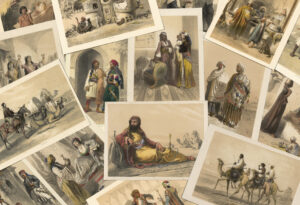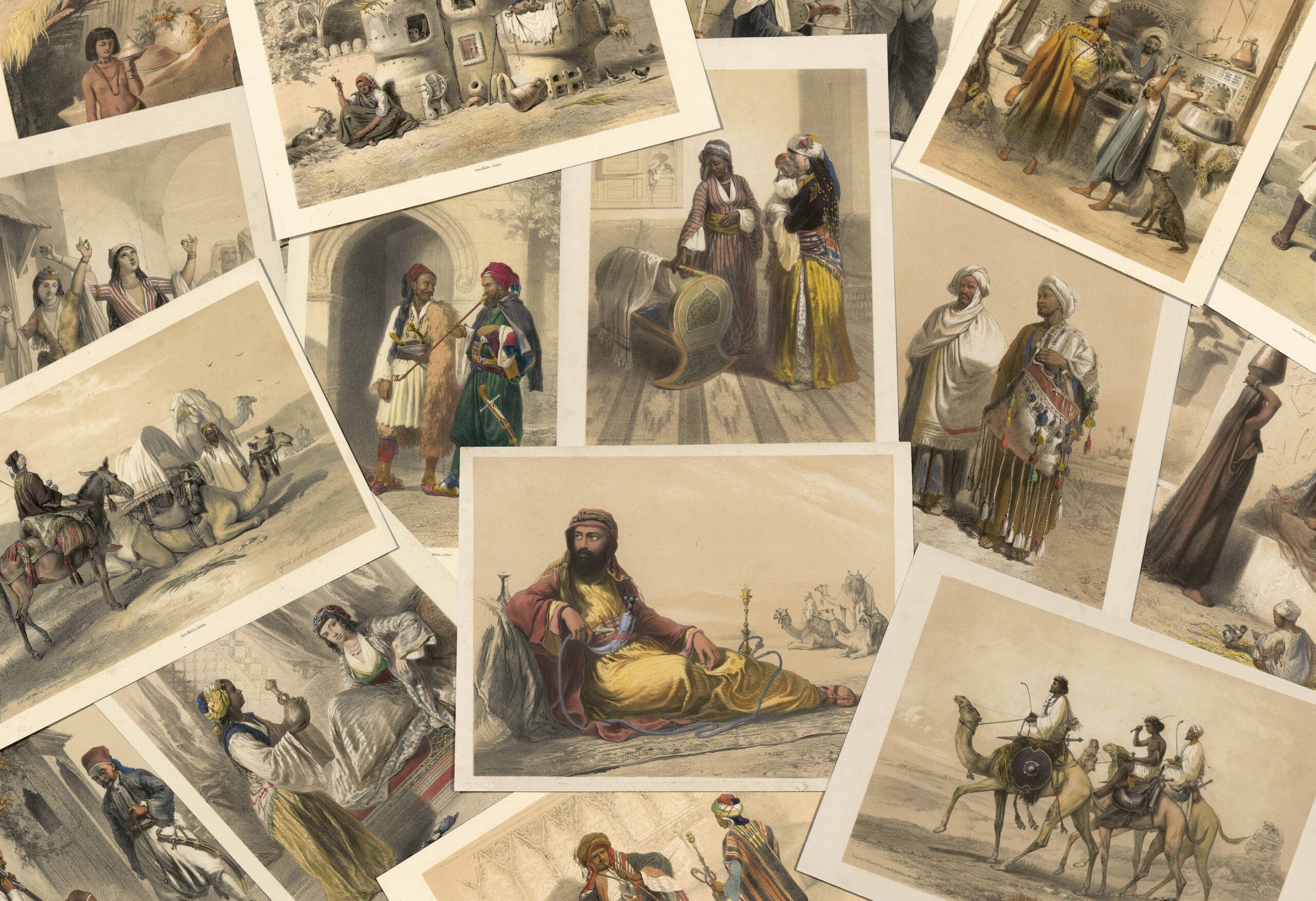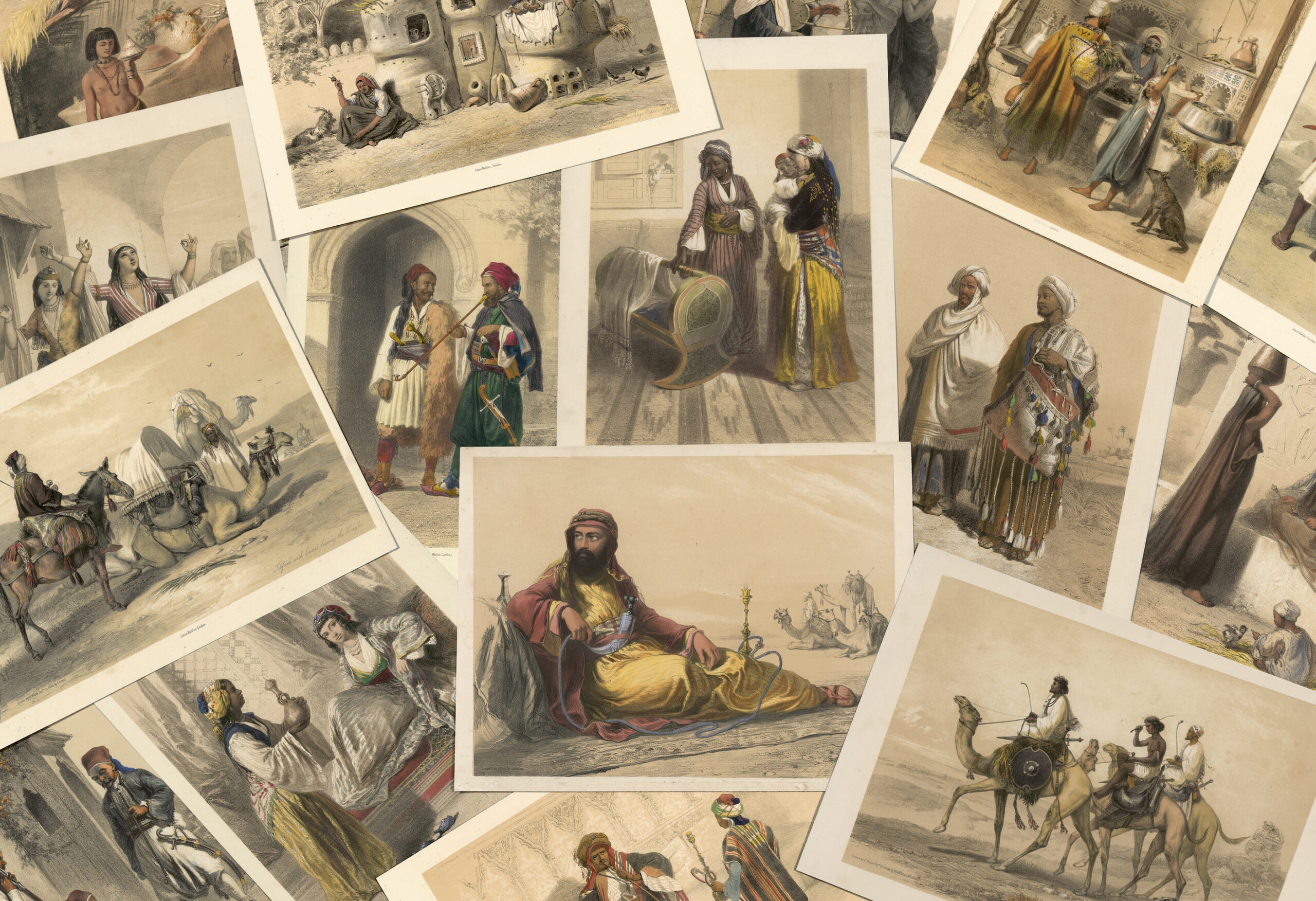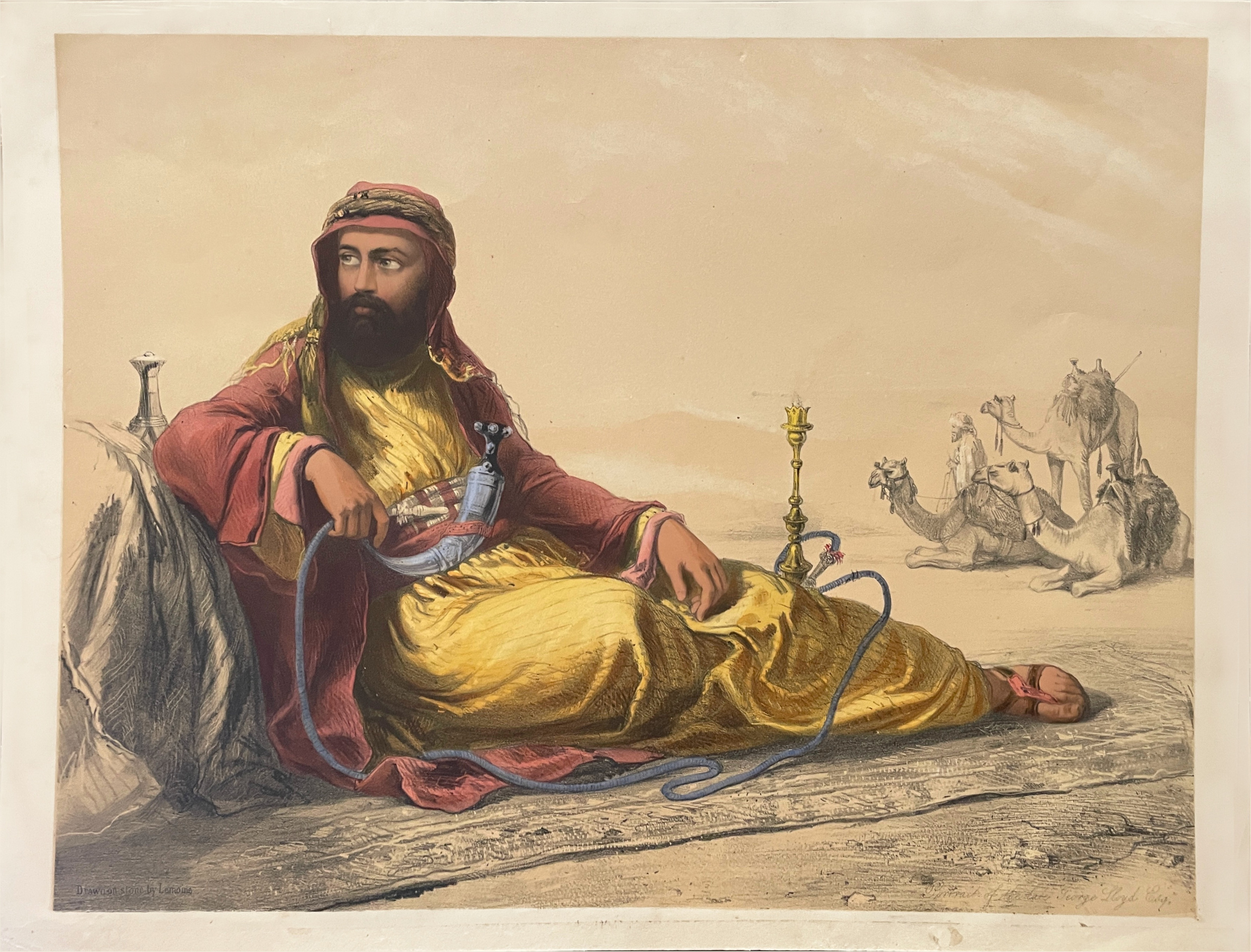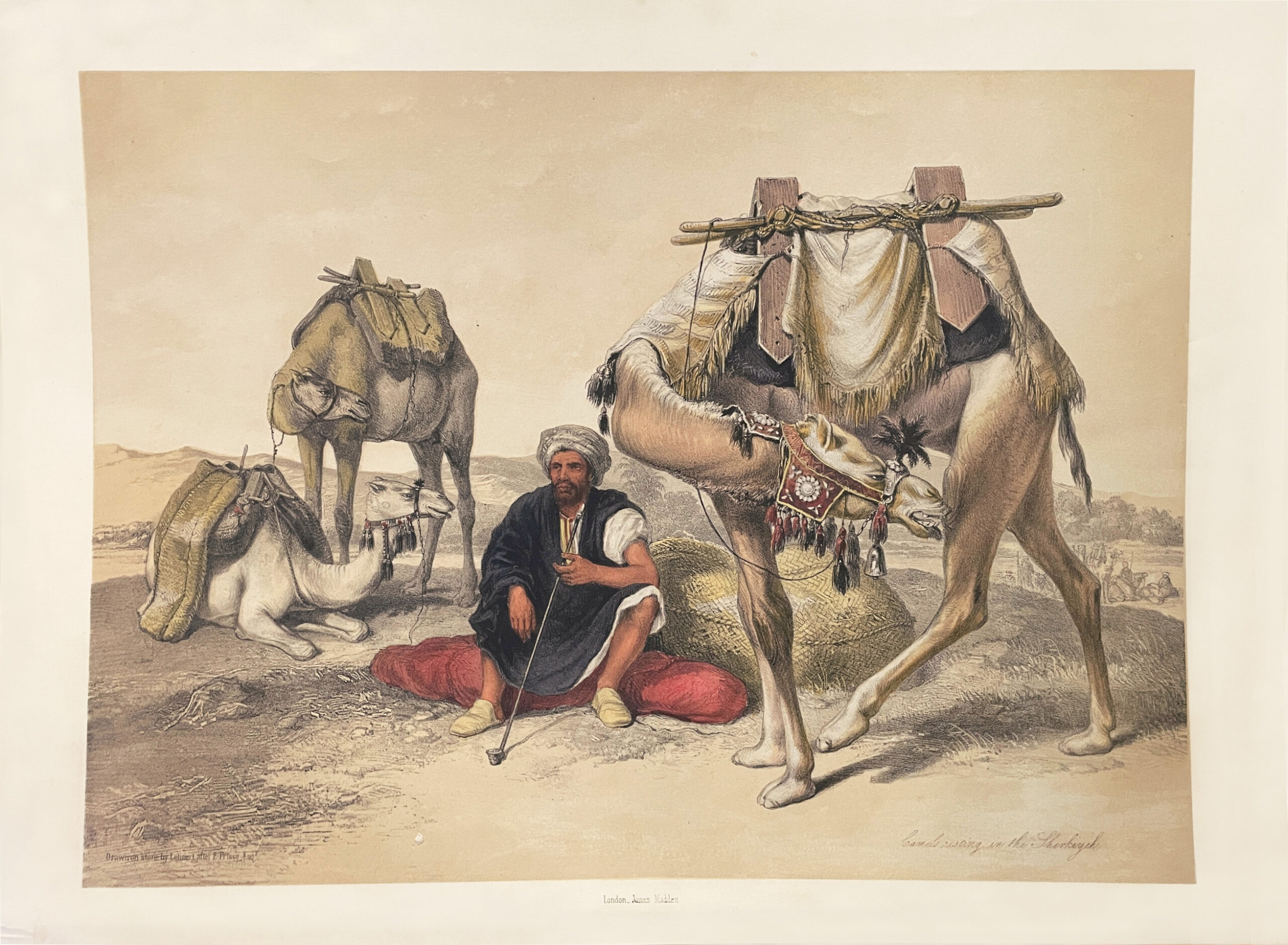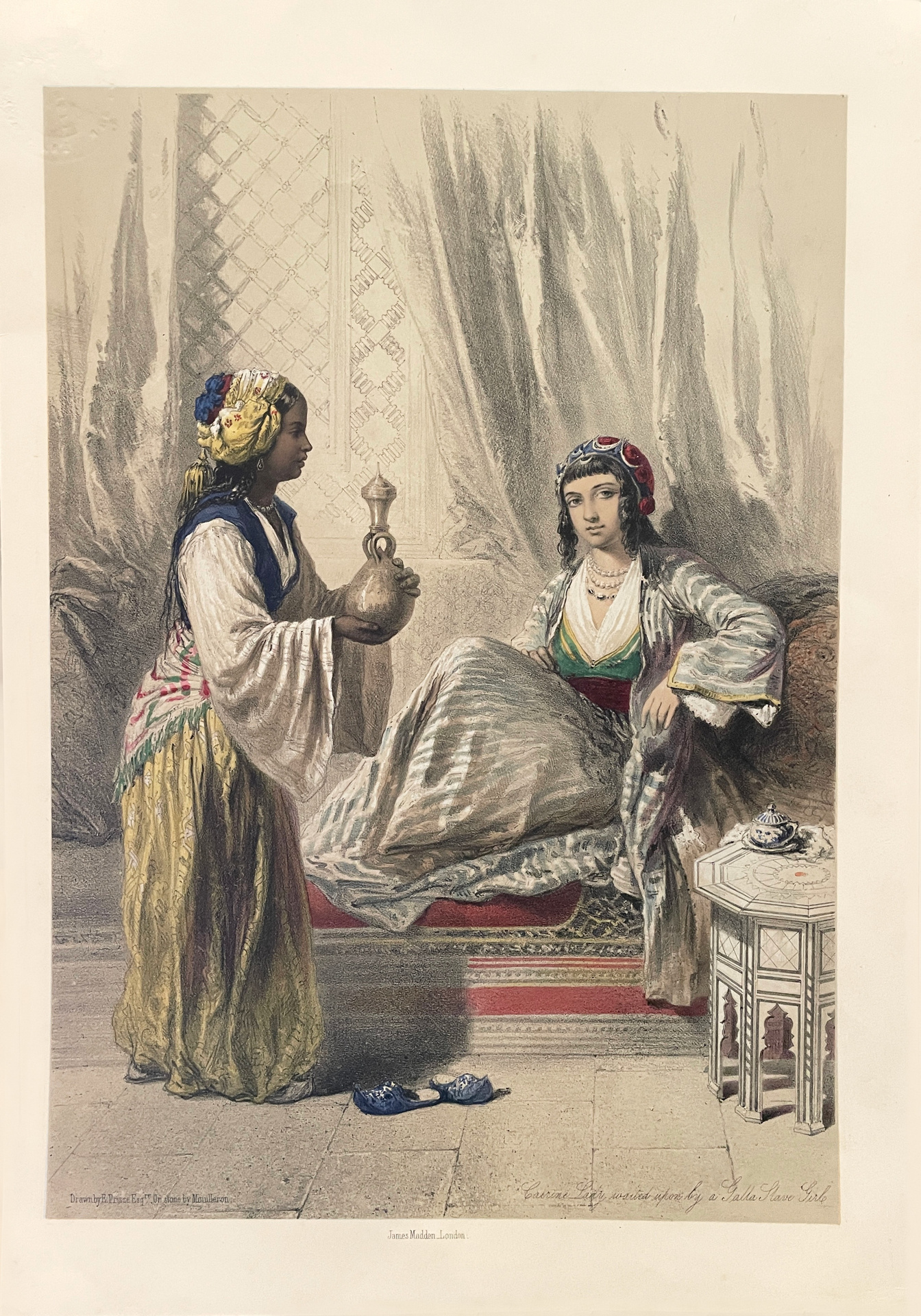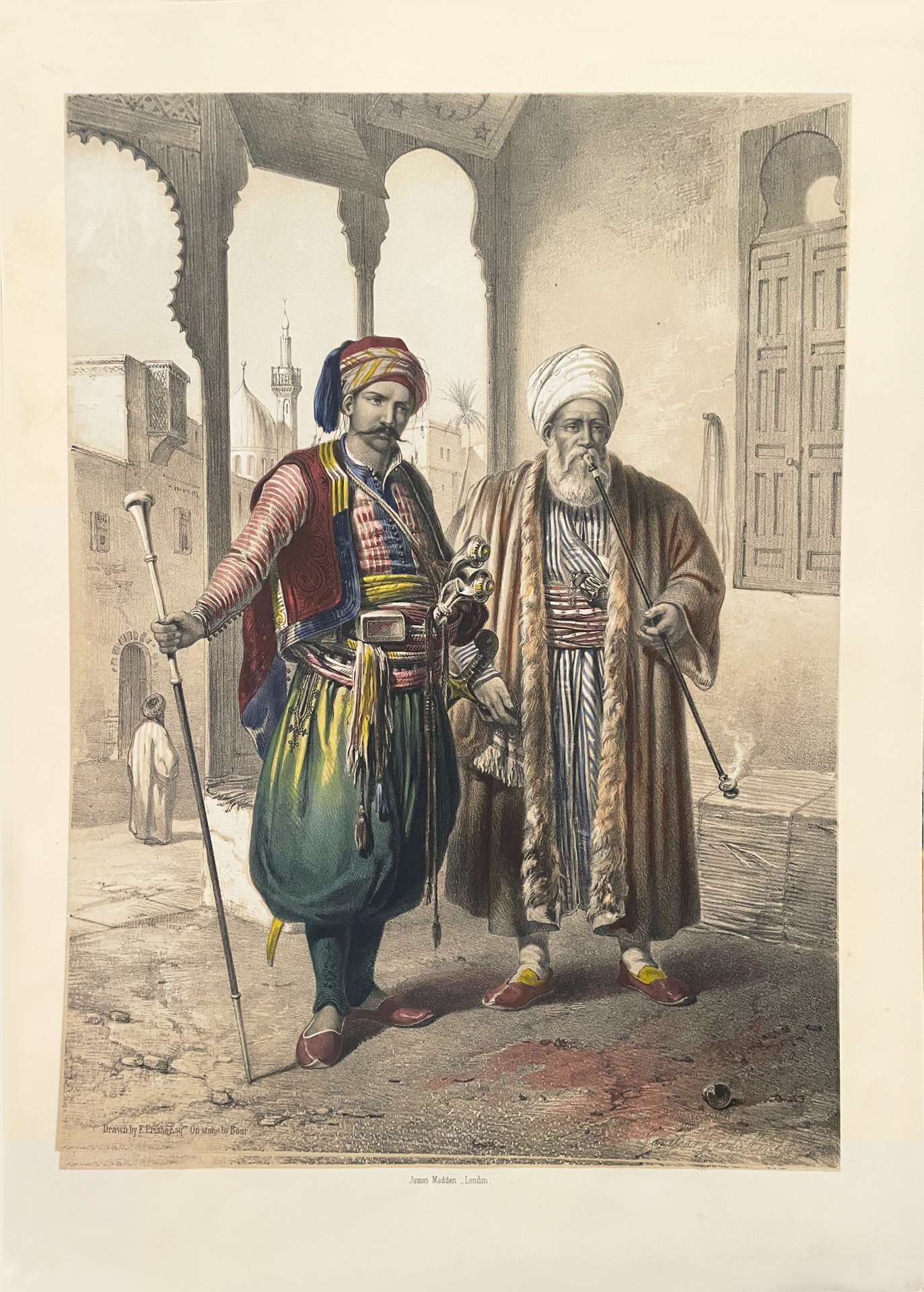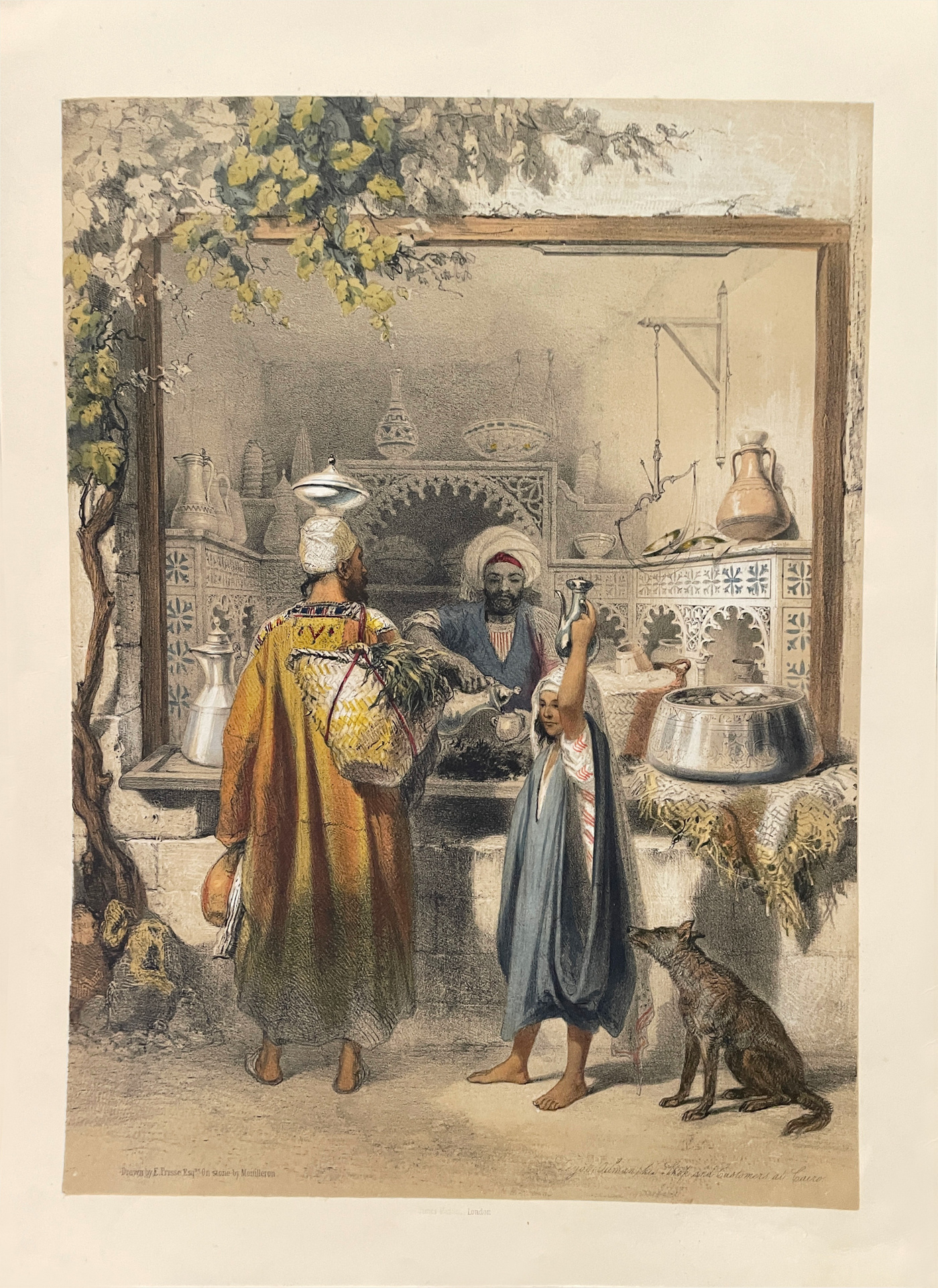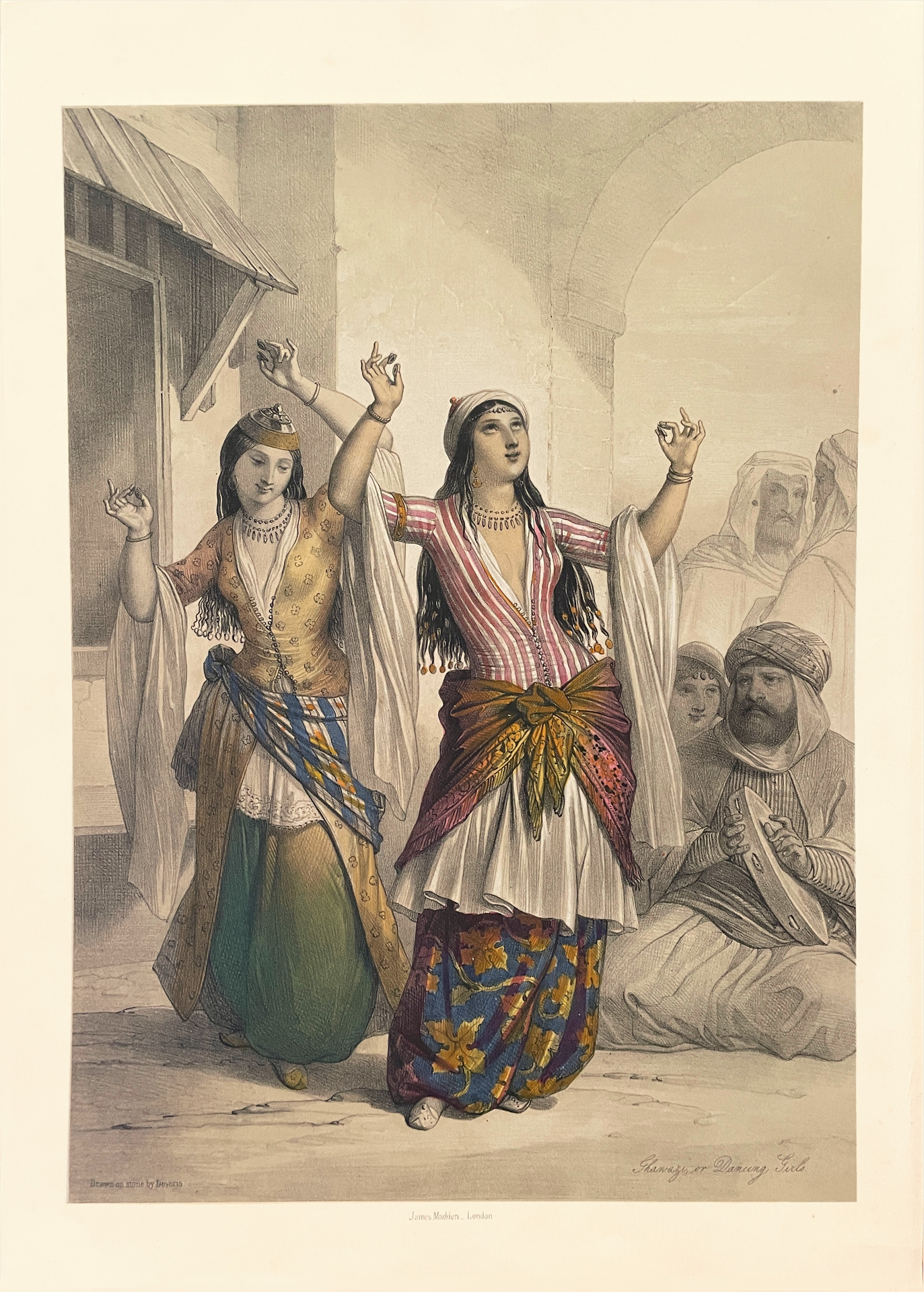London, James Madden, [1848].
30 coloured plates on single sheets plus 1 frontispiece.
Superb complete illustration about Egypt and Nubia out of text; êch plate mêsuring 422 x 303 mm belongs to the first issue of the first edition from 1848.
The coloured plates were drawn by Prisse d’Avennes, who worked in Thebes from 1839 to 1843 with the botanist George Lloyd.
Atabey 1001 ; Blackmer 1357 ; Lipperheide 1599.
Nomenclature :
Portrait of the late George Lloyd.
Arnaout and osmanli soldiers, Alexandria.
Ghawazi, or dancing girls. Rosetta.
Camels resting in the sherkiyeh. Land of Goshen, lower Egypt.
Egyptian lady in the harem. Cairo.
Nizam, or regular troops. Kanka.
Habesh, or Abyssinian slave. Cairo.
Zeyat (oilman), his shop and customers. Cairo.
Janissary and merchant. Cairo.
Young arab girl returning from the bath. Cairo.
Cairine lady waited upon by a galla slave girl.
Bedouins, from the vicinity of Suez.
Fellah, dressed in the haba.
Female fellah.
Female of the middle class drawing water from the nile.
Fellahs, a man and a woman.
Women of Middle Egypt.
Pêsant dwellings. Upper Egypt.
Ababdeh. Nomads of the Eastern thebaid desert.
Ababdeh riding their dromedaries.
Kafileh, with camels bêring the hodejh.
Dromedaries halting in the êstern desert.
Arab Sheikh smoking. From the coast of the red sê.
Wahabis, with an Azami arab.
Nejdi horse. Arabia.
Nubian females ; Kanoosee tribe. Phile.
Nubian and a fellah, carrying dromedary saddle-bags.
Berberi playing on the kisirka to women of the same tribe. Nubia.
Abyssinian priest and warrior.
Warrior from Amhara.
Abyssinian costume.
“31 large coloured plates of Arab costume, Bedouin Groups and Scenes. The most interesting and correct work on the Costume of the Arabs, Syrians and Egyptians”. (Oriental history, literature and languages, n°289)
“The above is one of the most attractive books of Eastern Costume ; the figures and groups are on a large scale, full of Eastern spirit”. (Catalogue B. Quaritch, 1859).
“Now complete, containing 31 large Lithographs. From the ‘Times’, Sept. 25. Among the splendid illustrated works by which this age is distinguished, there is, perhaps, none that will excel the ‘Oriental Album’, which is devoted to the pictorial exhibition of Egyptian life. The chief illustrations consist of large coloured lithographs, representing the costume and habits of all classes. These are bêutifully drawn by Mr. Prisse, and finished with that scrupulous attention to elaborate detail which is so necessary when designs are to be mêns of information as well as choice Works of Art”.
“From the ‘Spectator’, Sept. 12. The air of life, the force of effect, the brilliant but harmonious colouring, render the prints among the very finest works of their kind. The influence of such a book on the mind is analogous to that of travelling: it extends our knowledge of different modes of existence, and helps us to limit our category of necessaries. To possess such a work, therefore, is a luxury which counteracts the influence of luxury; though, indeed, to many it will furnish materials much more substantially useful than any more luxury”. (The Athenaeum: Journal of Literature, Science, the Fine Arts, etc., 1850).
